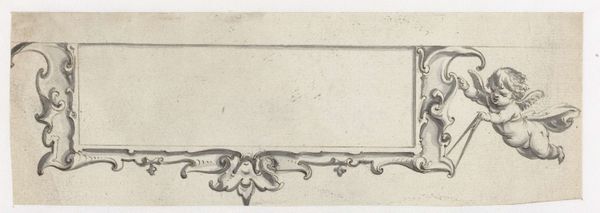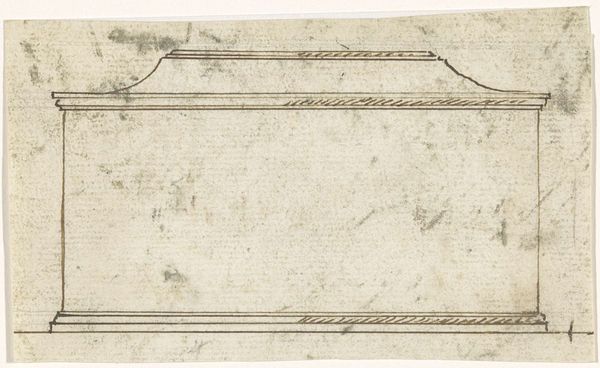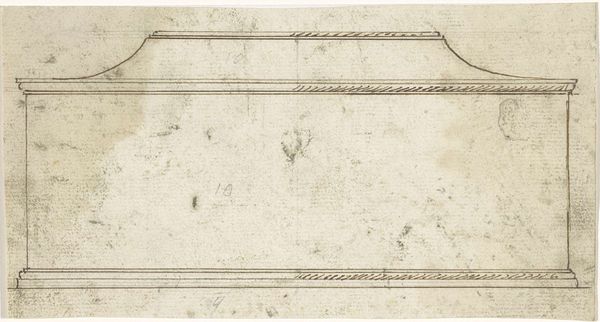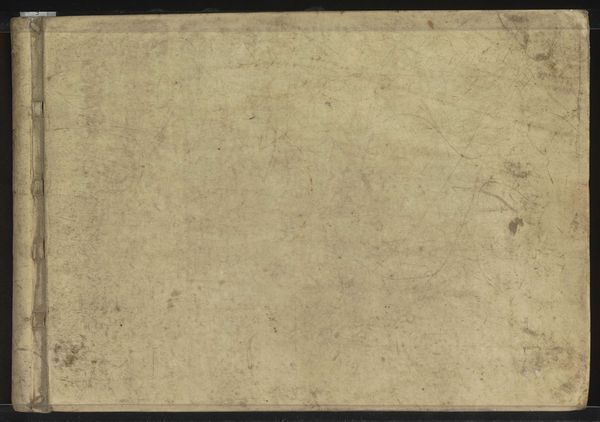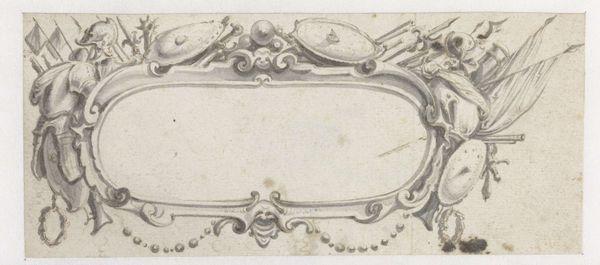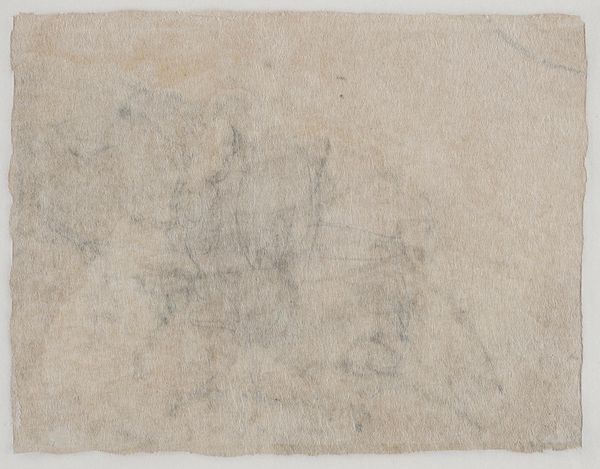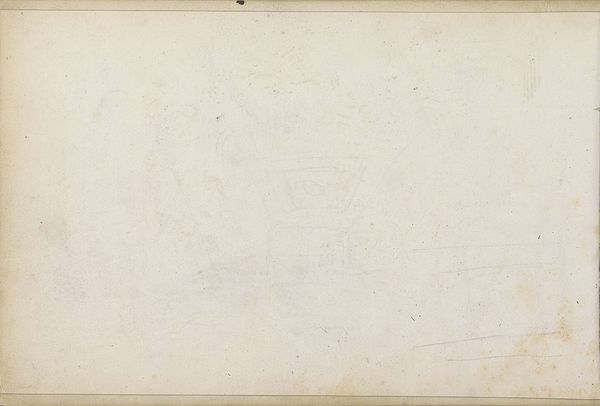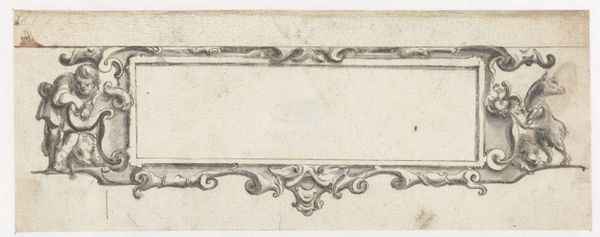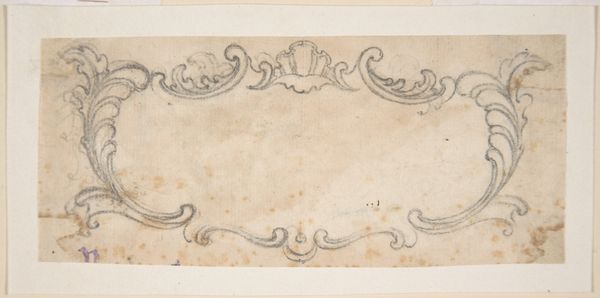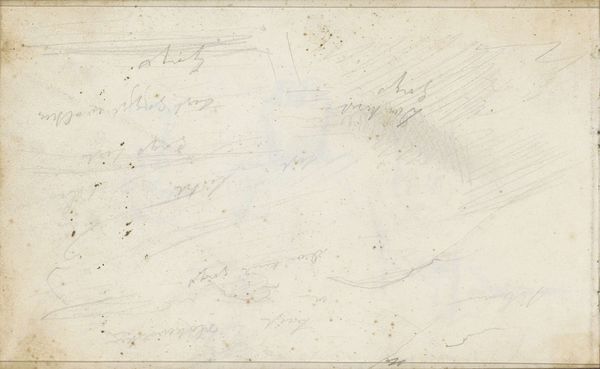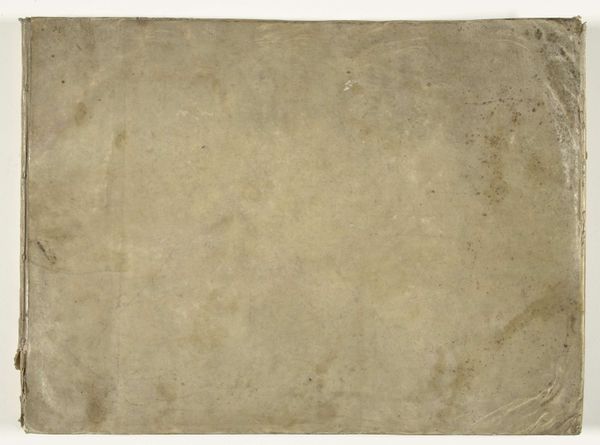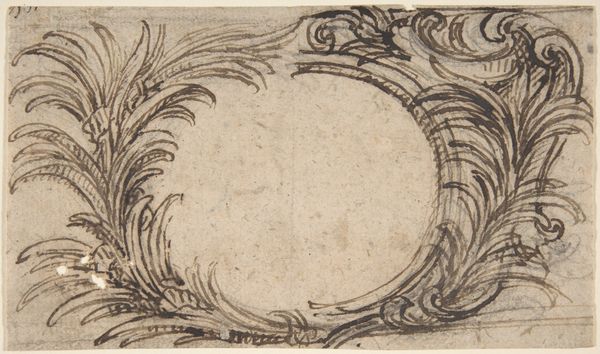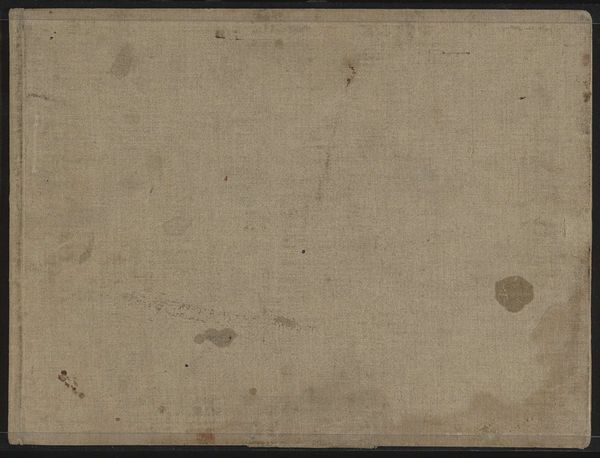
drawing, ink
#
drawing
#
baroque
#
pen sketch
#
pencil sketch
#
form
#
ink
#
pen-ink sketch
#
line
Dimensions: height 56 mm, width 152 mm
Copyright: Rijks Museum: Open Domain
Editor: This pen and ink drawing, "Draperie," by Pieter Jansz., made between 1657 and 1662, features flowing fabric held up by ribbons and knots. It feels very performative, almost theatrical to me. What kind of statement do you think Jansz. was trying to make? Curator: The theatricality you’re picking up on isn’t accidental. Baroque art frequently employs drapery to convey power, drama, and movement. These aren't just casual curtains; they're symbols of authority, stages on which narratives unfold. Have you considered how the specific rendering, the light and shadow, impacts the feeling it creates? Editor: Yes! The shading is almost frantic in places, full of implied movement. Almost as though the cloth is being buffeted by a breeze... but I am unsure what is being presented. The empty space where there is no cloth could stand for something, couldn't it? Curator: Precisely. The void becomes a site of projection, doesn’t it? Traditionally, this kind of "empty" banner could denote announcements of events to come, victories to be celebrated. In a cultural memory sense, a blank banner allowed those who looked on to envision their own desires. It has also been a sign of protest! Think about the possibilities. What could this mean when contextualizing Baroque sensibilities regarding civic representation, and artistic liberty? Editor: That makes a lot of sense. I hadn't considered the interplay of absence and expectation before. So it's both a blank slate and a culturally loaded symbol? Curator: Exactly. The drapery itself carries centuries of weight, doesn't it? In antiquity, the cloth represented power and position, or wealth and privilege. Then this was repurposed into the Renaissance, where paintings featured important or wealthy persons draped in such material to enhance status. It carries many levels of symbolic import. Editor: That is such a complex history to unpack. Thank you for helping me look at this drawing in a new light! Curator: My pleasure. Seeing how artists repurpose existing visual vocabulary to create new meanings is at the core of art history. There’s always more to uncover!
Comments
No comments
Be the first to comment and join the conversation on the ultimate creative platform.
